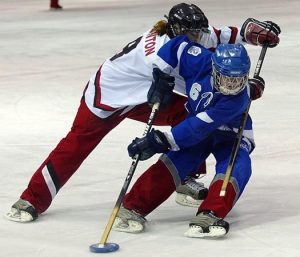How Many Periods in Hockey? Understanding Periods
How Many Periods in Hockey
Ice hockey, with its lightning-fast skating and bone-crushing checks, is a sport divided into distinct periods of action. But how many periods are there in a hockey game? Dive into this post to learn about the structure of a hockey game, including the number of periods, intermissions, and how this format impacts the flow and excitement of the sport. We’ll also explore how penalties and overtime can affect the overall length of a game. So, buckle up and get ready to drop the puck on the fascinating world of hockey period!
Hockey periods serve as the structural framework for the game, dividing it into manageable segments while also allowing for strategic breaks. These breaks are pivotal for players to recharge, coaches to adjust tactics, and officials to manage the flow of the game.
The Standard Structure of Hockey Games
In a standard hockey game, periods are the building blocks of gameplay. Each game comprises multiple periods, typically three in most formats, with each period having a predetermined duration. Intermissions between periods provide opportunities for players to regroup and strategize for the next phase of play.
How Many Periods Are There in Hockey?
Explaining the Traditional Three-Period System
The traditional three-period system is the cornerstone of hockey gameplay. This format divides the game into three equal parts, with each period lasting approximately twenty minutes. The breaks between periods offer a chance for players to rest and for coaches to make necessary adjustments to their game plan.
Variations in Period Lengths
While the three-period format is standard, variations exist across different levels and types of hockey. Youth leagues or recreational games, for instance, may feature shorter periods to accommodate younger or less experienced players. Conversely, professional leagues often adhere strictly to the traditional format.
Breakdown of Periods in Different Hockey Leagues
Different hockey leagues worldwide may adopt variations in their approach to periods. While many leagues, such as the NHL, follow the traditional three-period structure, some international competitions or specialized events might introduce unique formats to spice up the game.
Understanding Overtime Periods
Overtime periods come into play when a game ends in a tie after regulation play. These additional periods are crucial for determining a clear winner, often employing rules such as sudden death or extended play to ensure a decisive outcome.

Historical Evolution of Periods in Hockey
The evolution of hockey periods reflects the broader evolution of the sport itself. From its early days to the modern era, changes in rules, player strategies, and audience preferences have influenced how periods are structured and managed in hockey games.
Importance of Periods in Game Strategy
Periods serve as strategic milestones within a hockey game, influencing team tactics and player performance. Coaches analyze factors such as score, time remaining, and player fatigue to devise effective strategies for each period, maximizing their team’s chances of success. For more information related to Hockey, then click here networldfusion.com
Differences Between Periods in Ice Hockey and Field Hockey
While both ice hockey and field hockey share similarities in their use of periods, there are notable differences in how these periods are managed and structured in each sport. Understanding these distinctions provides insight into the unique dynamics of each game.
Strategies for Teams Across Periods
Successful hockey teams adapt their strategies dynamically across different periods, capitalizing on opportunities while mitigating risks. Whether it’s maintaining pressure in the offensive zone or tightening defensive play, strategic flexibility is key to staying competitive throughout the game.

Notable Moments in Hockey Periods
Hockey history is replete with memorable moments that have unfolded within individual periods. From last-minute goals to dramatic comebacks, these moments showcase the intensity and unpredictability of the sport, captivating fans worldwide.
Conclusion
In conclusion, hockey periods are more than just breaks in gameplay. They are pivotal components that shape the ebb and flow of a match. Whether adhering to the traditional three-period system or exploring innovative formats, understanding the significance of periods enhances one’s appreciation for the game’s intricacies.
FAQs
Q1: Can hockey games have more than three periods?
A: While rare, certain formats or special events may feature games with additional periods.
Q2: What happens if a hockey game is tied at the end of the third period?
A: Overtime periods are played until a winner is determined, typically through sudden death or extended play.
Q3: How long are intermissions between periods in hockey?
A: Intermissions between periods in hockey games typically last around fifteen to twenty minutes.
Q4: Do teams switch sides between periods in hockey?
A: Yes, teams often switch ends of the rink between periods to ensure fairness due to potential differences in ice conditions.
Q5: Are penalties carried over between periods in hockey?
A: No, penalties typically do not carry over between periods, unless specified by the rules of the league or competition.
